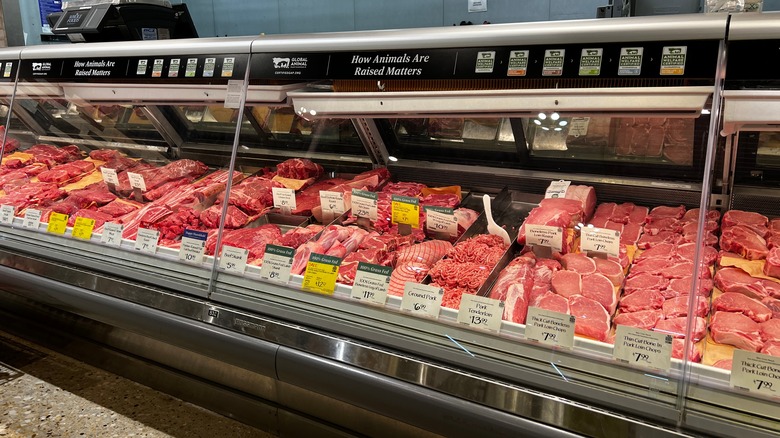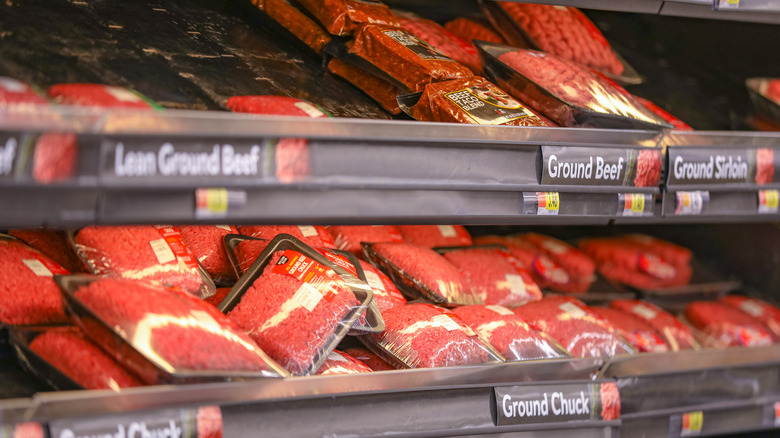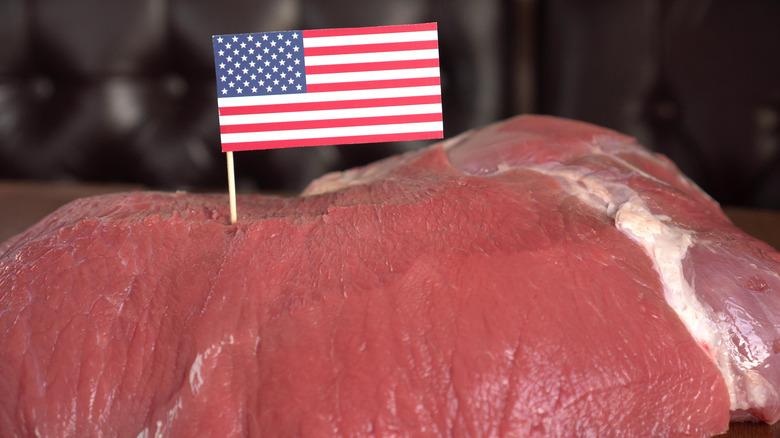Biden Administration Proposes New Meat Industry Labeling Regulations
Labels don't always reveal the actual origins of a product, and this is especially true when we're talking about meat sold in America. While most — if not all — of the processed meat or meat products we buy are labeled "Product of USA" or "Made in USA," most of the livestock that was used to produce that meat was not actually raised in the country. A report by the US Department of Agriculture shows that while the United States may be the world's biggest beef producer, it is also the world's second-largest importer, and since 2017, the USDA says most of our beef has been coming in from Canada, Australia, New Zealand, Mexico, and Brazil. These are just four of a total of 17 countries that are allowed to send both fresh and frozen beef to the U.S.
The reason why our labels are so misleading comes down to a set of rules which were implemented in 2015. Under those regulations, meat can come from abroad and be stamped "Product of U.S.A.," even if it was born, raised, and slaughtered overseas. All that needs to happen for that label to be legit is for the meat to be processed in the country in some way; by processing, we mean taking a cut of meat and dividing that into smaller ones to be sold or even placing the meat into plastic trays.
The Biden Administration wants to change the rules behind Made in USA label
But the government is now looking to change that. A rule proposed by the Biden Administration looks to specify that meat products labeled as "Product of the U.S.A." need to be exactly that: born, raised, slaughtered, and processed on U.S. soil, and it is meant to cover pork, poultry, and eggs. As Agriculture Secretary Tom Vilsack said: "American consumers expect that when they buy a meat product at the grocery store, the claims they see on the label mean what they say" (via Reuters).
The USDA has proof that the labels have been misleading Americans since the more ambiguous rules were introduced in 2015. In a survey the department carried out in 2022, respondents said they had thought the "Product of USA" label meant that the meat product had originally from farms and ranches on American soil. The lack of transparency is such that a study by the Stone Barns Center for Food and Agriculture revealed that as much as 75% to 80% of grass-fed beef in America was taken from cattle grown overseas.
US labeling laws changed in 2016 to become WTO-compliant
It wasn't always this way. Between 2009 and 2015, all meat sold in the country was required to have a "country of origin" label, which explicitly stated where livestock or poultry was born, raised, and slaughtered. That labeling law had to be changed in 2016 after Canada and Mexico raised objections to the World Trade Organization, saying the reveal would damage their trade with the U.S.
The Biden Administration's move to change the rule is seen as a victory for U.S. cattlemen, who have felt the loophole was bad for domestic cattle farmers, and which allowed multinational firms to benefit in the process. Today, the country's biggest meat processors, Cargill, Tyson Foods, JBS, and National Beef Packing, buy over 80% of U.S. cattle.
As U.S. Cattlemen's Association president Justin Tupper put it, "If it says 'Made in the USA,' then it should be from cattle that have only known USA soil. Consumers have the right to know where their food comes from, full stop" (via Reuters).


